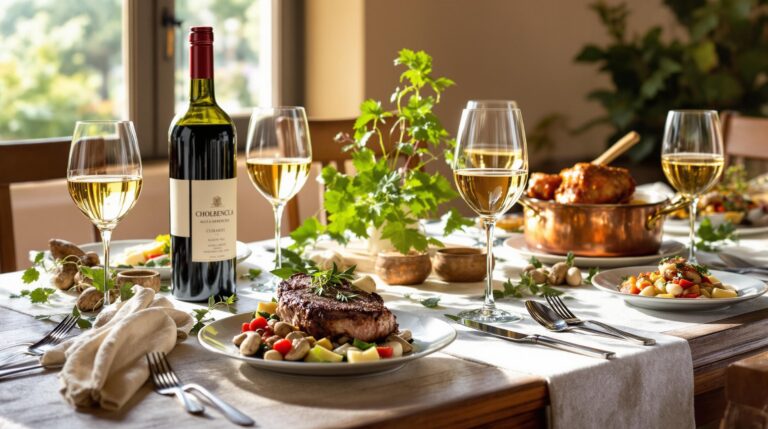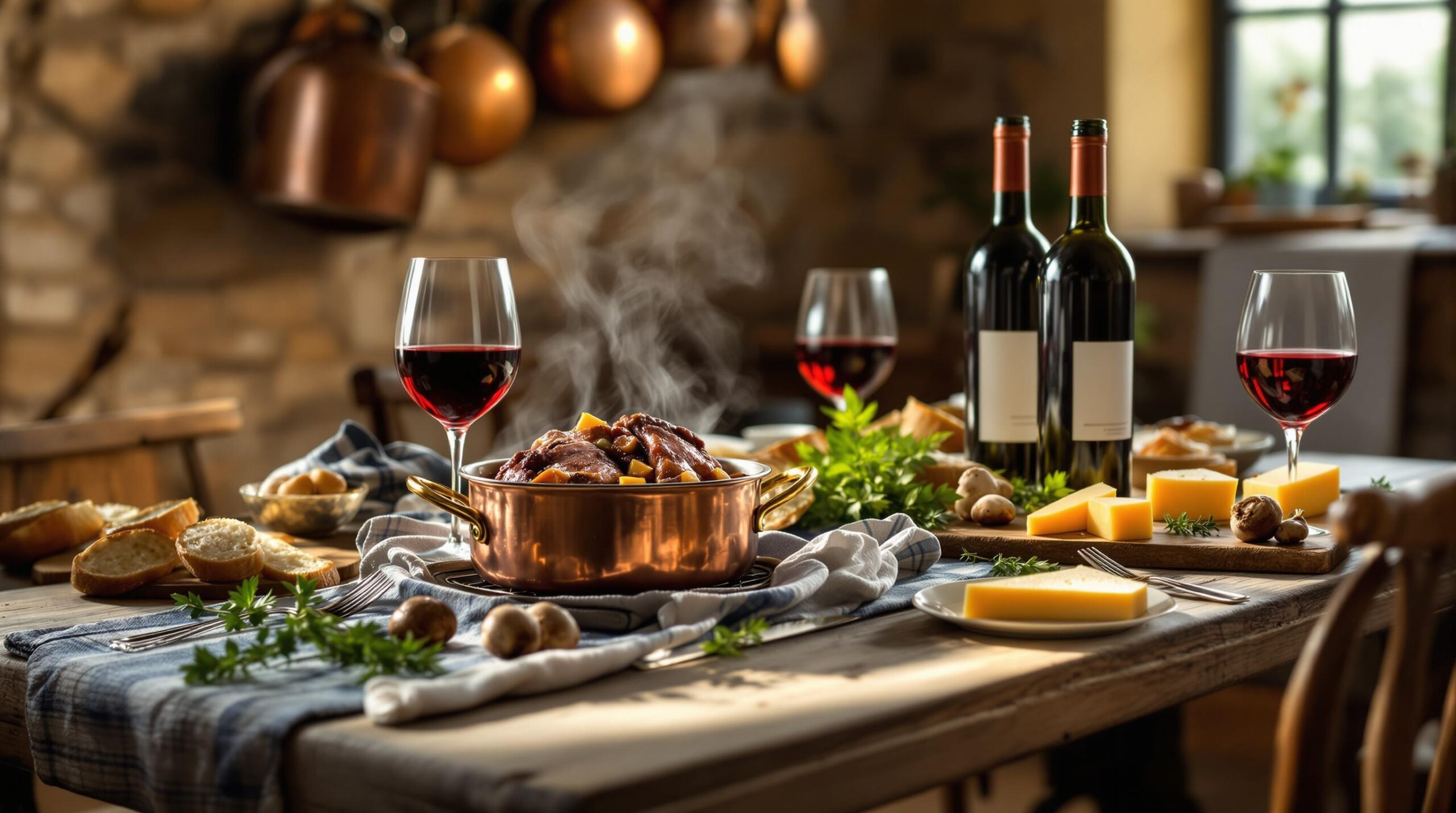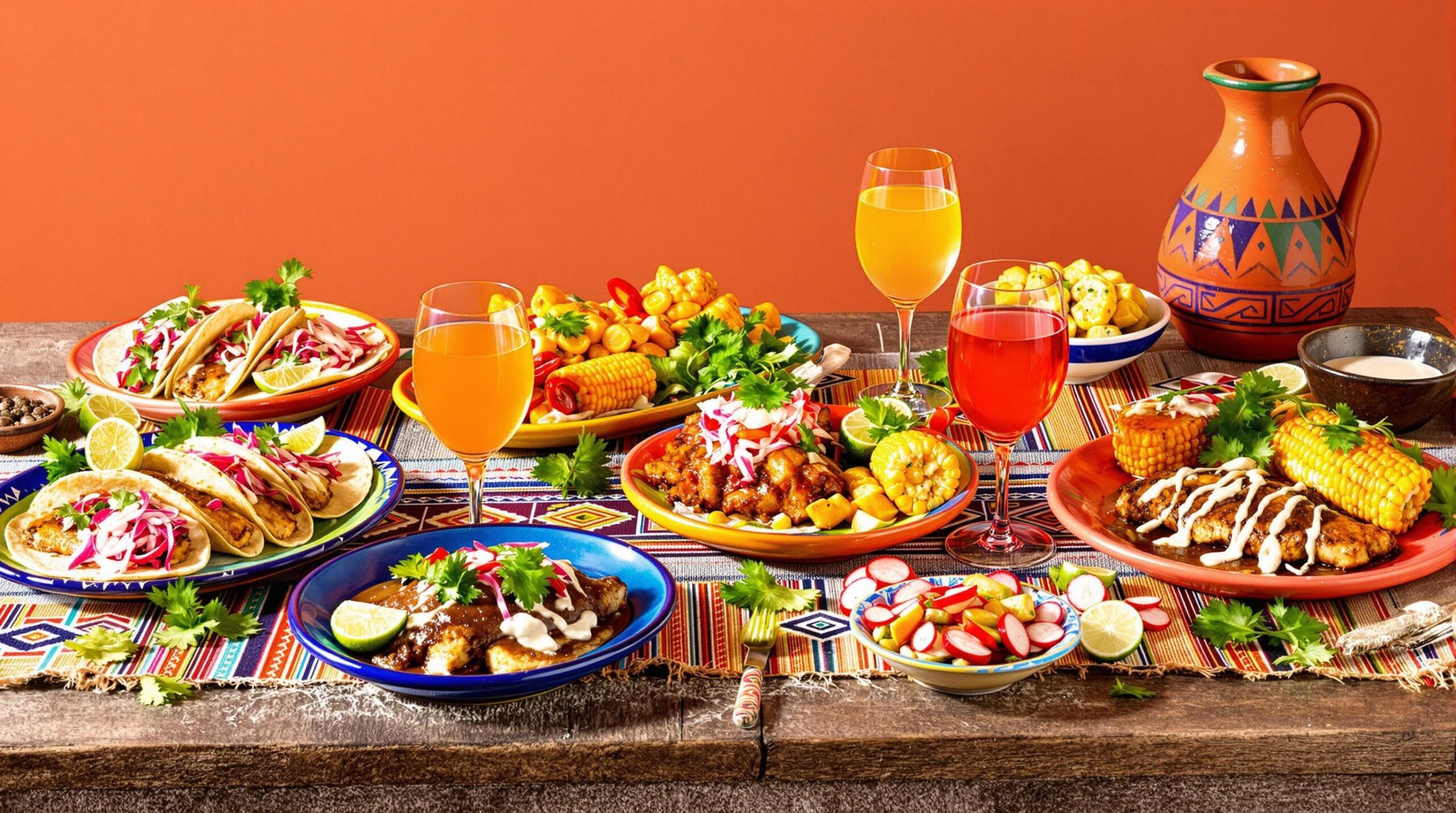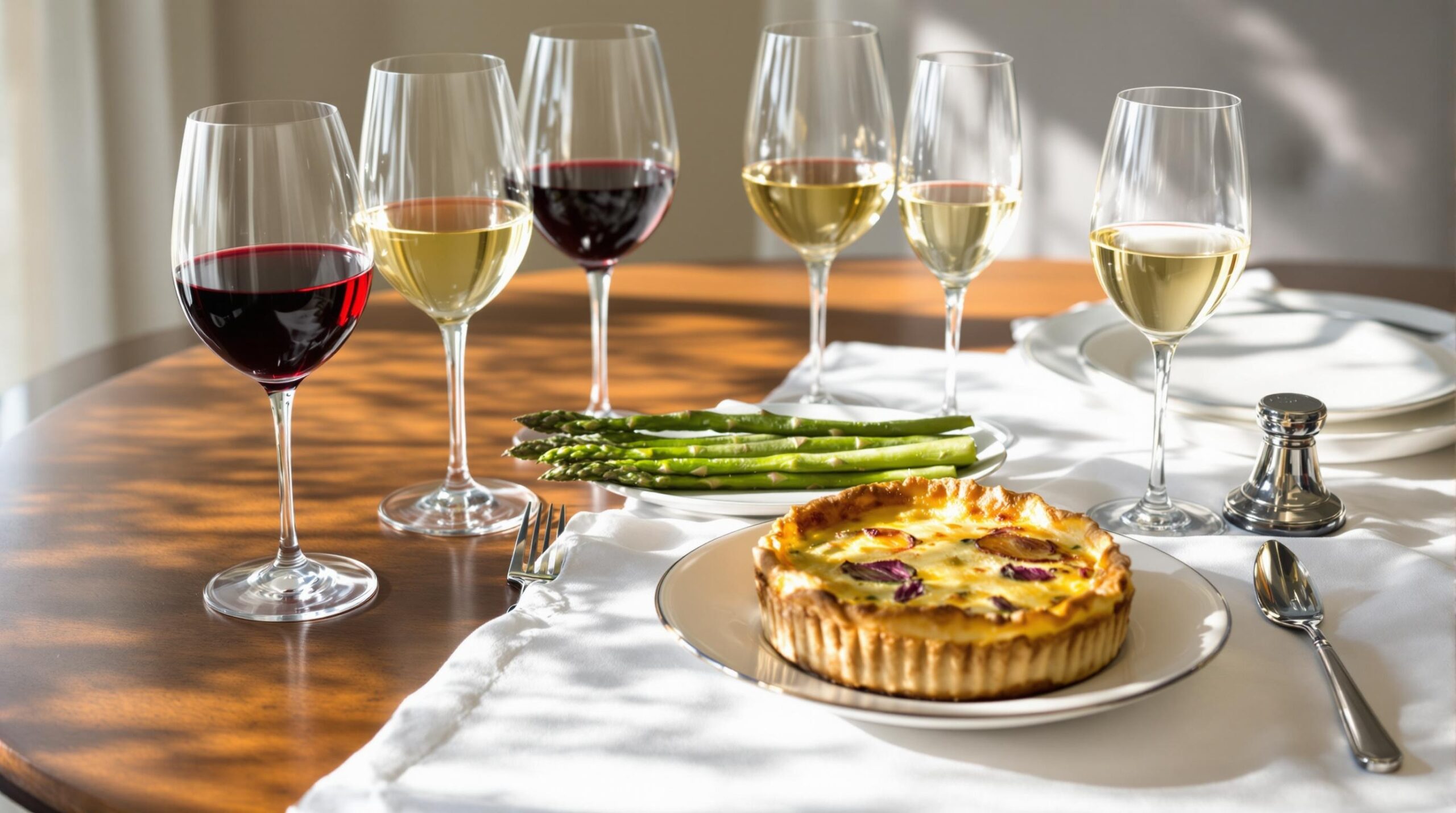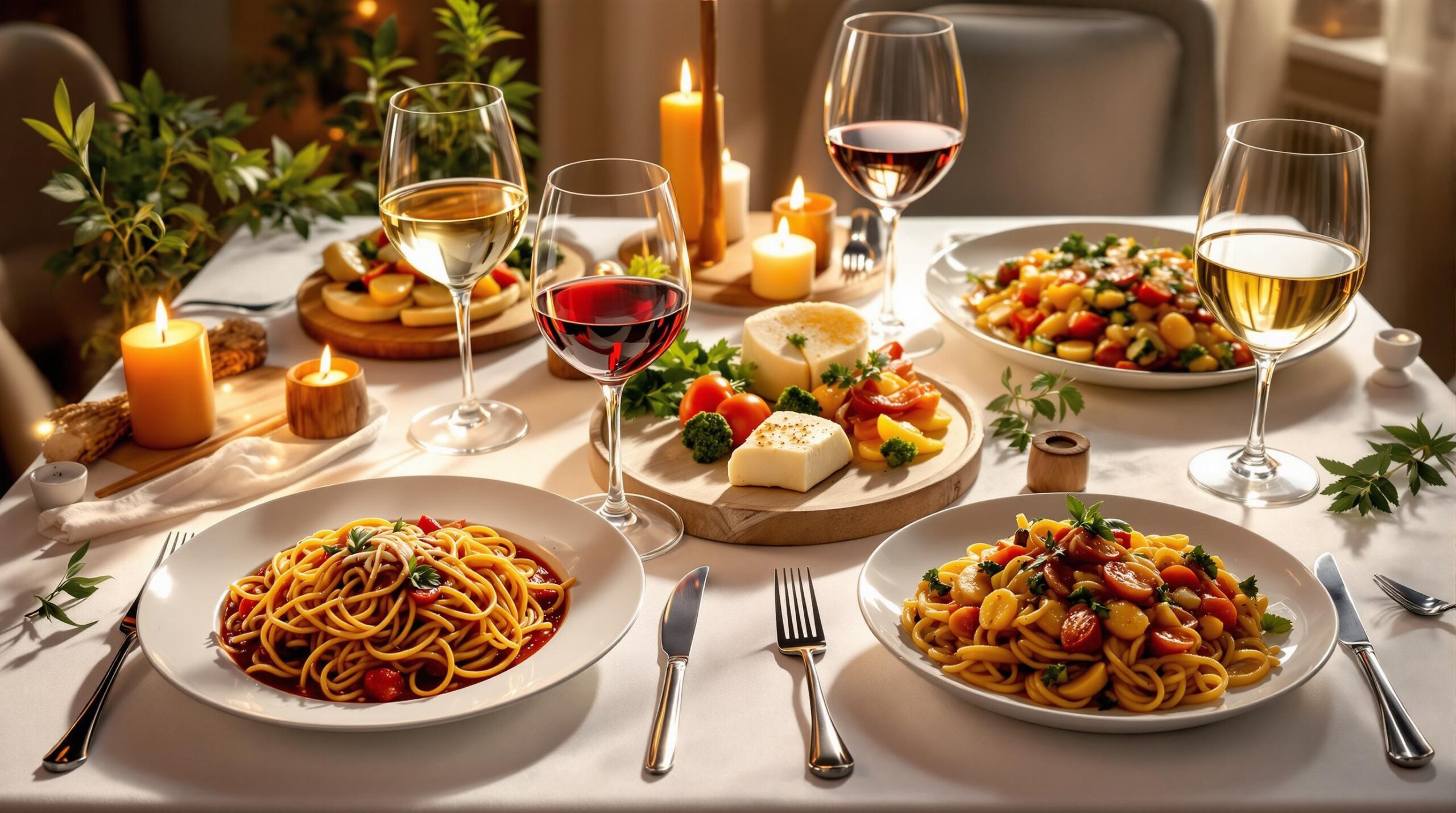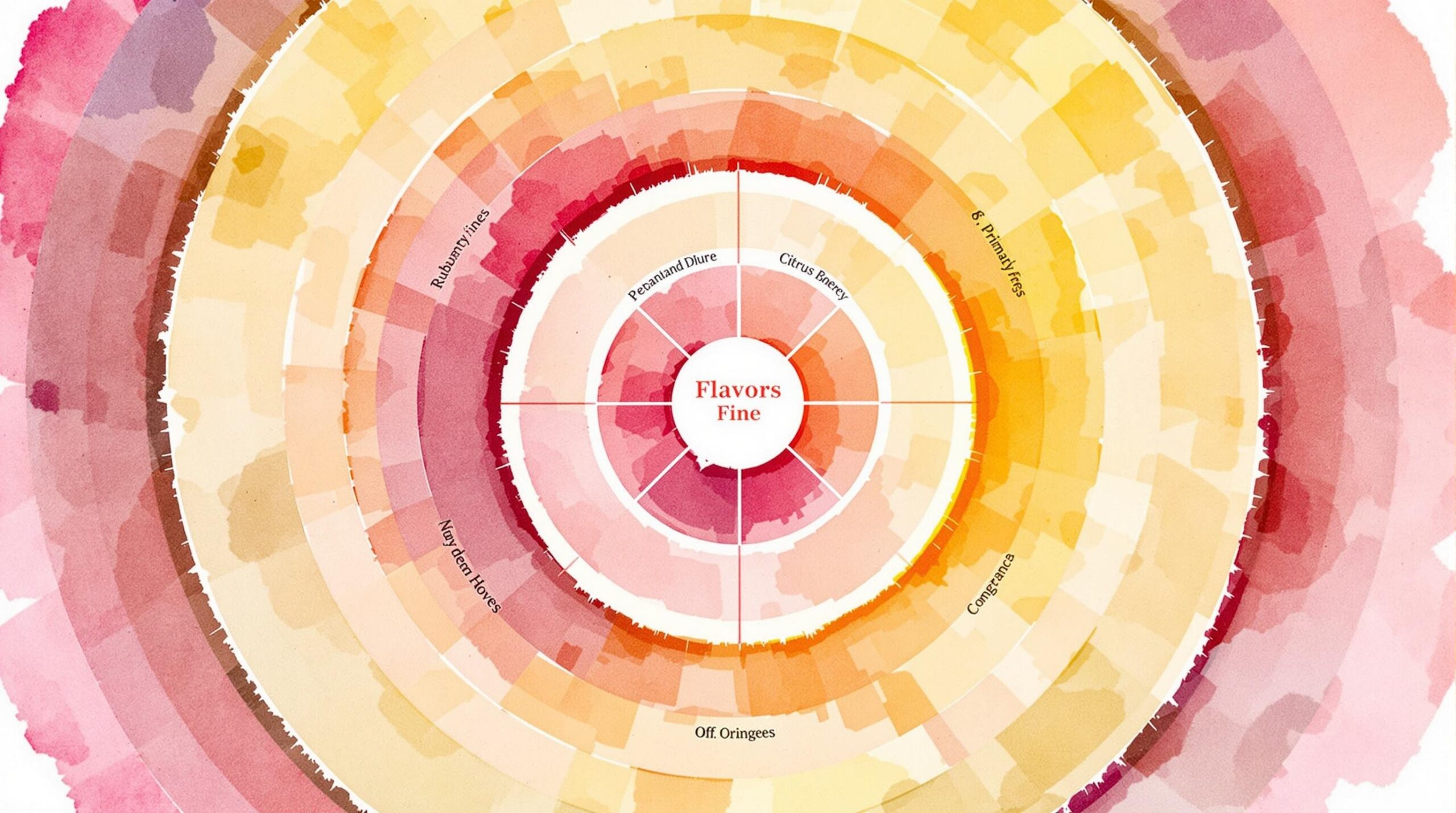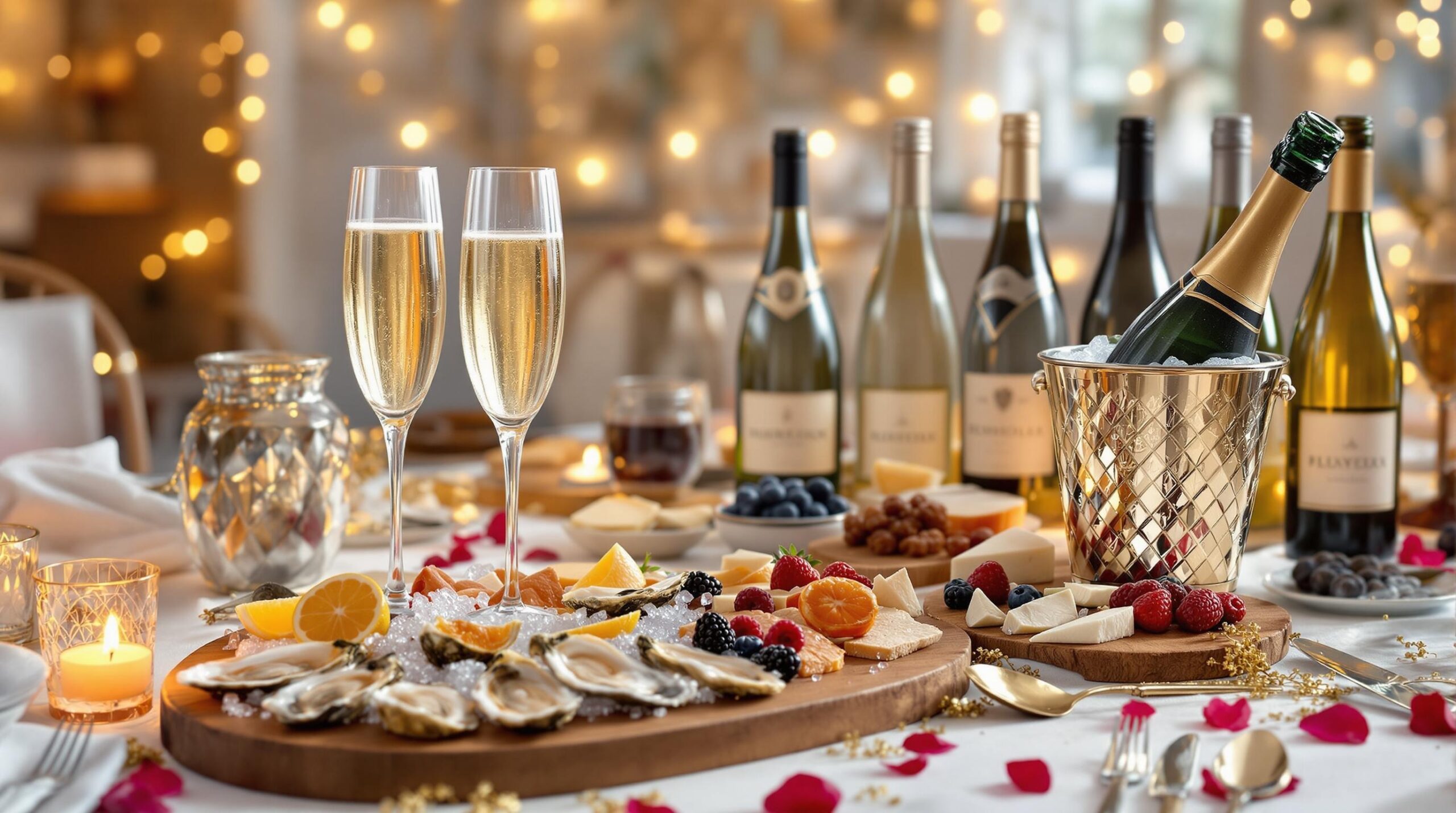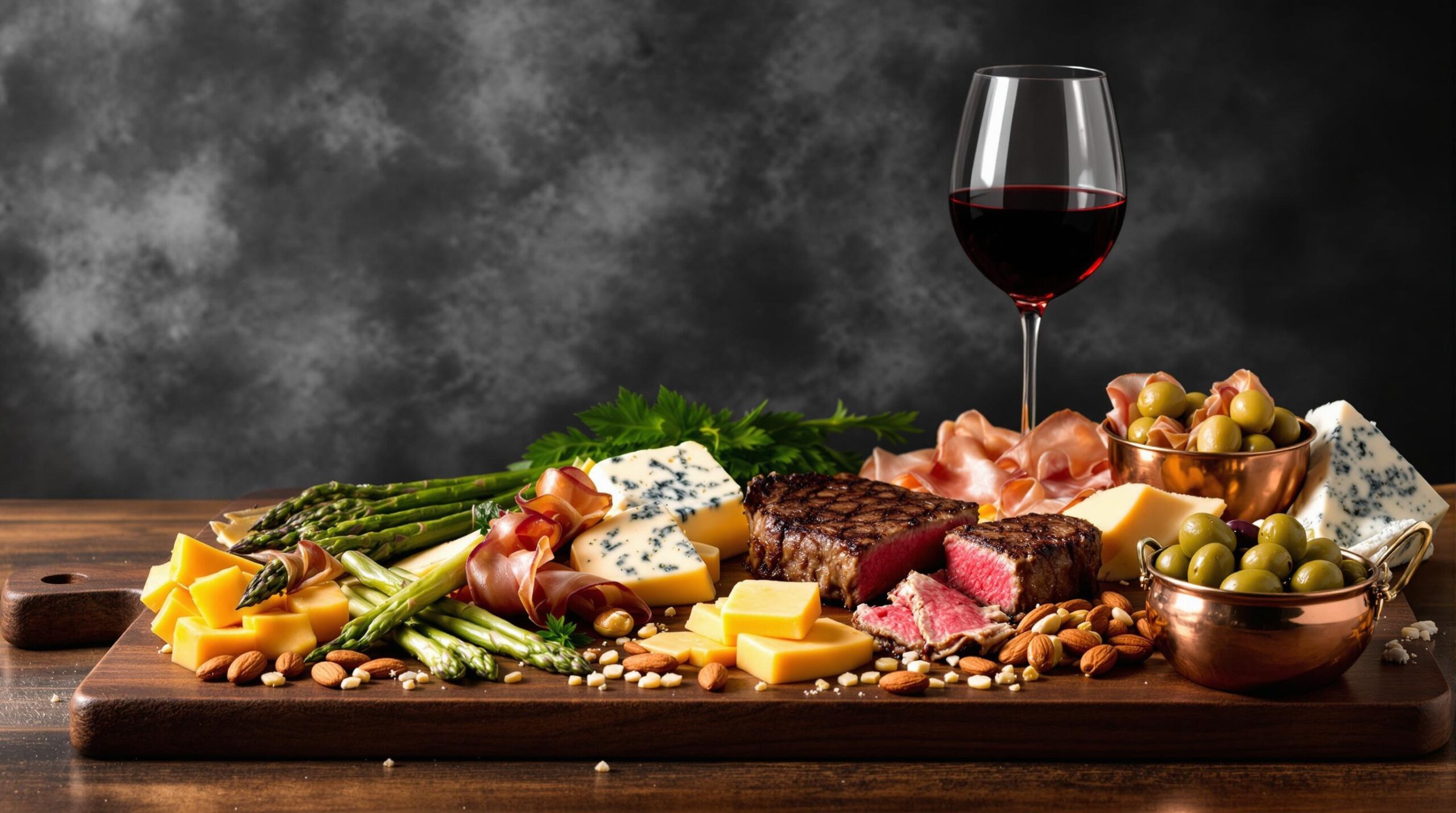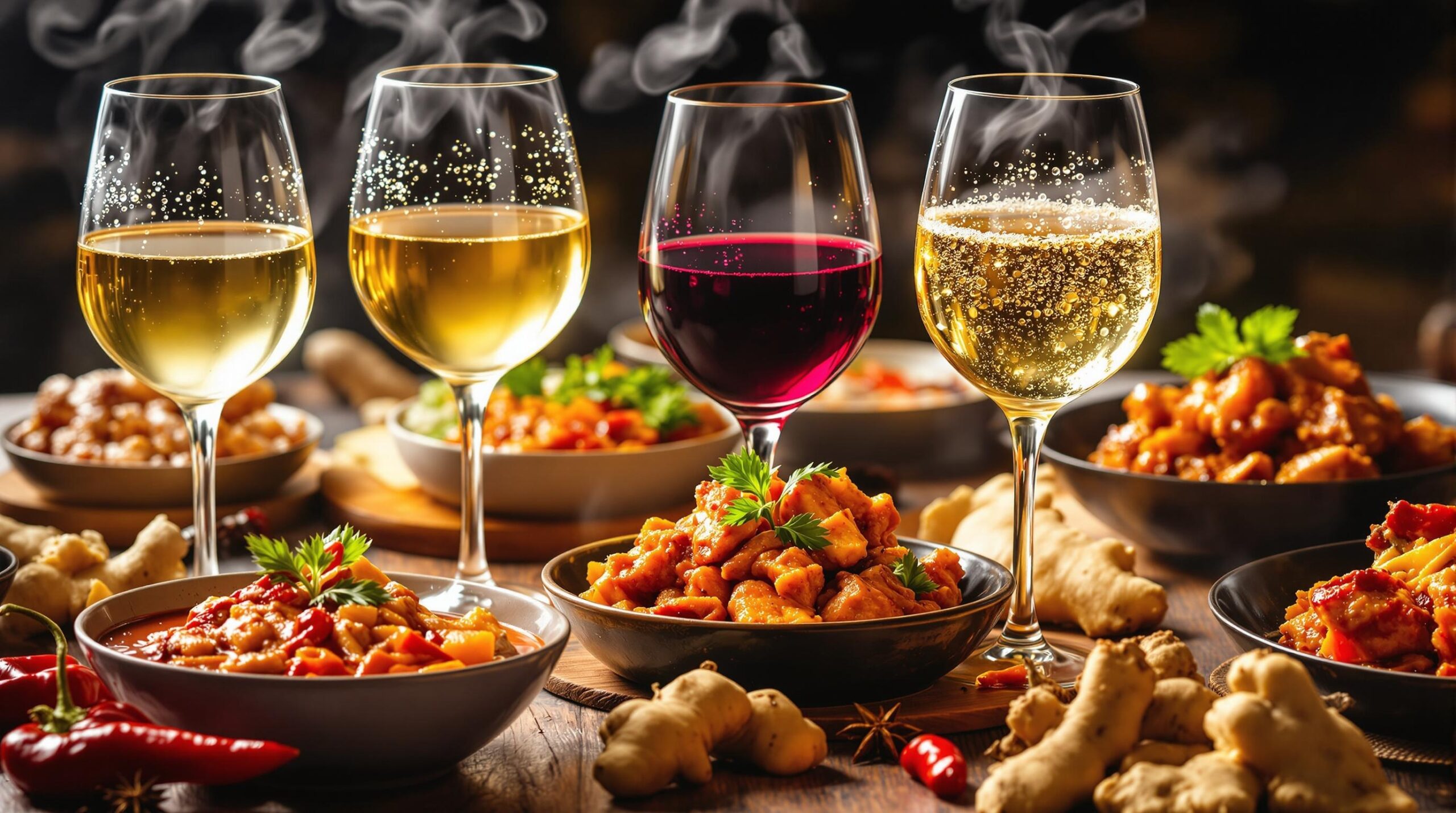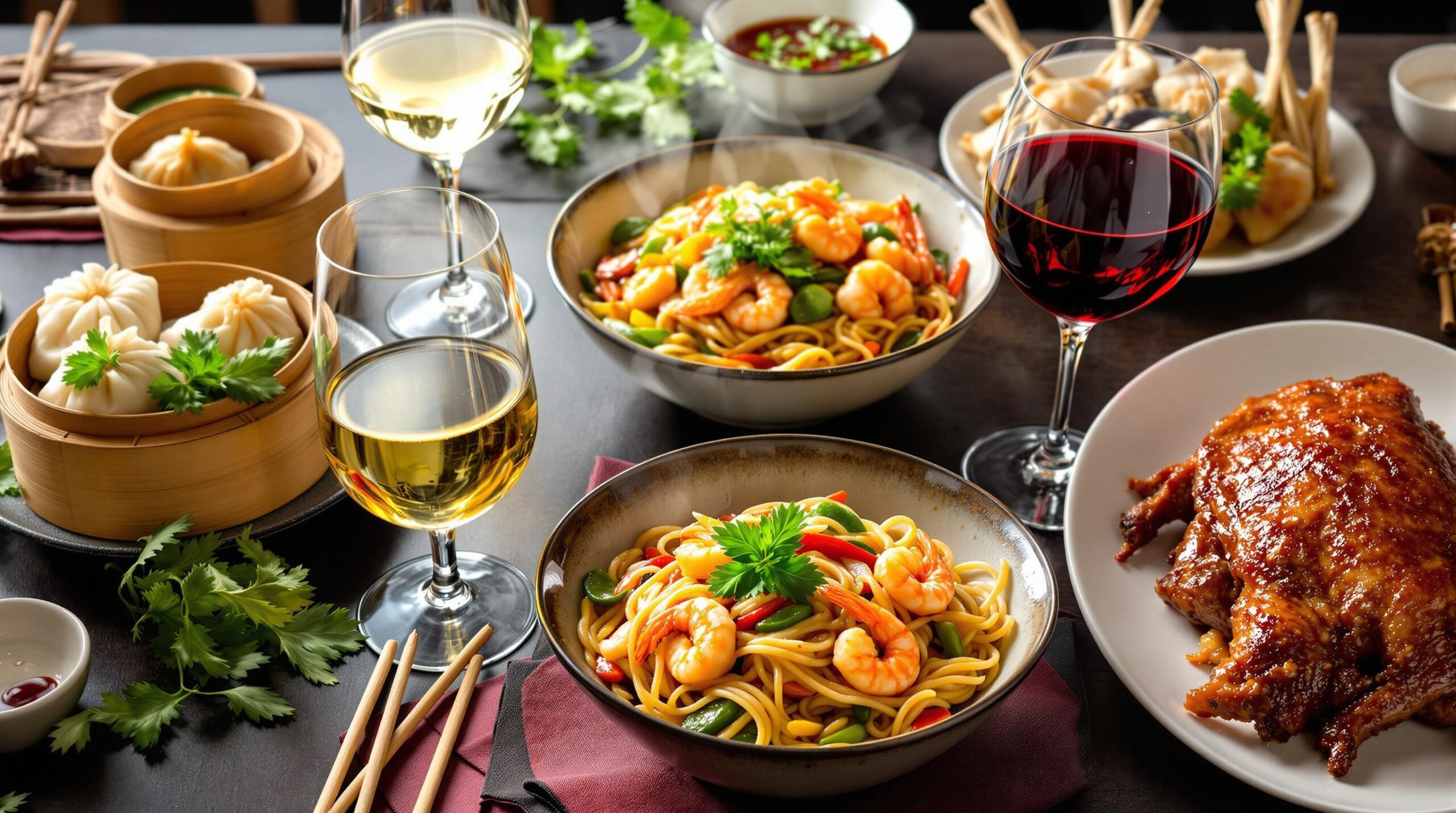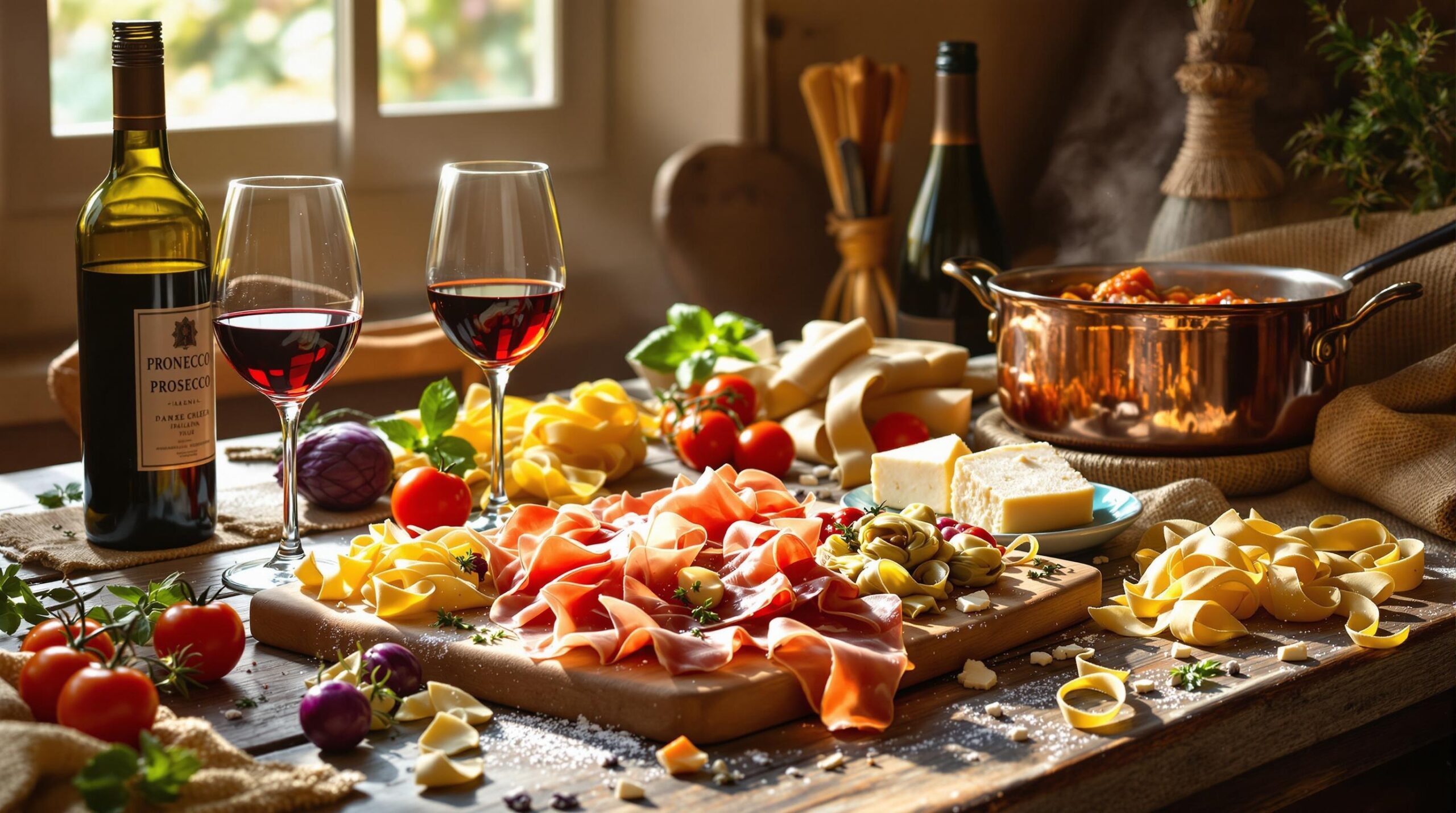Understanding how to pair food and wine transforms everyday meals into memorable dining experiences. Food and wine pairing follows simple principles that anyone can master with basic knowledge and practice.
Core Principles of Food and Wine Pairing
The foundation of successful pairing rests on balance and complementary flavors. Light dishes work best with lighter wines, while robust foods need fuller-bodied wines. Consider these key elements:
- Acidity levels in both food and wine
- Intensity of flavors
- Texture and weight of the dish
- Primary taste components (sweet, salty, bitter, umami)
Regional Pairing Method: What Grows Together Goes Together
Traditional regional combinations have evolved over centuries for good reason. Follow these proven matches:
| Region | Classic Food | Traditional Wine |
|---|---|---|
| Tuscany | Bistecca alla Fiorentina | Chianti Classico |
| Burgundy | Coq au Vin | Pinot Noir |
| Provence | Bouillabaisse | Rosé |
Common Food Categories and Their Wine Matches
Different food groups naturally align with specific wine characteristics:
Protein Pairings
- Red Meat: Cabernet Sauvignon, Malbec, Syrah
- Poultry: Chardonnay, Pinot Noir, Viognier
- Seafood: Sauvignon Blanc, Pinot Grigio, Chablis
Vegetarian Options
- Roasted Vegetables: Medium-bodied reds like Grenache
- Fresh Salads: Light whites like Verdicchio or Albariño
- Mushroom Dishes: Light reds like Pinot Noir
The Role of Temperature in Wine Service
Serving wine at the right temperature enhances its characteristics and overall enjoyment. Common mistakes include serving red wines too warm and white wines too cold.
Temperature Guidelines
- Full-bodied reds: 60-65°F (16-18°C)
- Light reds: 55-60°F (13-16°C)
- White wines: 45-50°F (7-10°C)
- Sparkling wines: 40-45°F (6-7°C)
Handling Special Occasions and Large Groups
Planning wine service for events requires different considerations than everyday pairings. Focus on crowd-pleasing selections and practical serving strategies.
Event Planning Tips
- Calculate one bottle per two guests for a 2-hour event
- Choose versatile wines that pair with multiple dishes
- Consider serving both red and white options
- Have backup bottles ready at proper temperature
Common Pairing Mistakes to Avoid
Understanding what not to do is as important as knowing the right combinations. Watch out for these frequent missteps:
| Mistake | Better Approach |
|---|---|
| Matching only by color | Consider food weight and intensity |
| Overwhelming delicate flavors | Match wine intensity to dish intensity |
| Ignoring sauce components | Factor in sauce as main pairing element |
Building Your Pairing Confidence
Developing food and wine pairing skills takes practice and experimentation. Start with these practical steps:
Learning Strategies
- Start with classic pairings as benchmarks
- Take notes on successful combinations
- Join local wine tasting groups
- Try side-by-side comparisons with different wines
Recommended Tools
- Wine journal for tracking preferences
- Digital thermometer for proper serving temperatures
- Basic wine preservation system
- Proper stemware for different wine types
Remember that personal taste matters more than strict rules. These guidelines serve as a starting point for your own wine and food exploration journey.
FAQs About Food and Wine Pairing for Different Diets
1. How do I pair wine with vegetarian dishes?
Plant-based meals often have earthy, umami-rich flavors. Mushroom-based dishes pair well with light to medium-bodied reds like Pinot Noir. Grilled vegetables match nicely with crisp whites like Sauvignon Blanc.
2. What wines work with vegan cheese alternatives?
Nut-based cheeses pair well with unoaked Chardonnay or Viognier. For cashew cheese spreads, try Prosecco or other sparkling wines to complement their creamy texture.
3. Which wines complement gluten-free meals?
Gluten-free pasta dishes made with rice or corn pair well with light whites like Pinot Grigio. Quinoa-based dishes match nicely with Vermentino or Grenache Blanc.
4. What are good wine options for keto-friendly meals?
High-fat keto dishes pair well with full-bodied reds like Cabernet Sauvignon. For seafood-based keto meals, opt for dry whites like Chablis or Sancerre.
5. How do I pair wine with dairy-free dishes?
Coconut milk curries work well with off-dry Riesling or Gewürztraminer. Cashew cream sauces pair nicely with unoaked Chardonnay or Verdicchio.
6. What wines match with paleo-friendly foods?
Grilled meats common in paleo diets pair well with bold reds like Syrah or Malbec. For root vegetables, try medium-bodied whites like Viognier.
7. How should I pair wine with raw food dishes?
Fresh salads and raw vegetables pair well with light, crisp whites like Muscadet or Picpoul. Raw fruit-based desserts match nicely with Moscato d’Asti.
8. What wines work with Mediterranean diet meals?
Olive oil-based dishes pair beautifully with Italian whites like Verdicchio. Grilled fish matches well with Albariño or light Provence rosés.
9. How do I pair wine with low-sodium dishes?
Herb-seasoned foods pair well with aromatic whites like Torrontés. Avoid high-alcohol wines that can intensify salt cravings.
10. Which wines complement plant-based protein alternatives?
Tempeh and seitan dishes pair well with medium-bodied reds like Sangiovese. Lentil-based meals match nicely with Côtes du Rhône or Grenache blends.
Quick Tips for Dietary-Specific Wine Pairing
– Consider the cooking method rather than just the main ingredient
– Pay attention to sauce components when selecting wines
– Match wine body with food intensity
– Think about texture contrasts between food and wine
– Remember that spice levels affect wine selection
– Focus on regional pairings when possible
– Keep seasonal ingredients in mind
– Consider the overall meal experience, not just individual components
Common Pairing Mistakes to Avoid
– Overlooking the impact of cooking techniques on wine selection
– Focusing too much on protein alternatives instead of overall flavor profiles
– Ignoring sauce compositions in dietary-restricted meals
– Forgetting about temperature considerations for both food and wine
– Disregarding the importance of palate cleansing between courses

